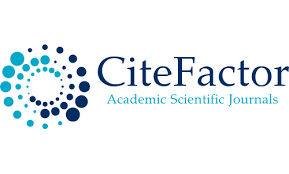Una primera aproximación epidemiológica de la migraña en población general paraguaya: frecuencia y factores asociados
DOI:
https://doi.org/10.18004/mem.iics/1812-9528/2023.e21122303Palabras clave:
trastornos migrañosos, migraña común, migraña con aura; prevalencia, ParaguayResumen
La migraña es uno de los trastornos neurológicos más frecuentes, con una prevalencia y una morbilidad elevadas. Está asociada a varios factores de riesgo, tanto biológicos como psicológicos, desencadenantes y comorbilidades. Este fue un estudio descriptivo, de asociación cruzada, no probabilístico, de casos consecutivos. Los participantes fueron reclutados a través de una encuesta en línea en octubre de 2022. Se midieron variables demográficas, datos del estado de salud y hábitos. Se realizó tamizaje de migraña a través del cuestionario ALCOI-95 y tamizaje de adicción a Internet a través de la subescala de adicción a Internet del Cuestionario MULTICAGE CAD-4. Se encuestó a 846 sujetos, de los cuales el 70,9 % eran mujeres y la media de edad fue de 28,62 años. El 14,5 % cumplía con criterios diagnósticos de migraña (5,2 % migraña con aura y 9,3 % migraña sin aura). El 63,8 % cumplía con criterios de tamizaje para adicción a Internet. Se encontró asociación entre el sexo femenino y migraña (p<0,001). En cuanto al estado de salud, el 21,39 % tenía diagnóstico de ansiedad, el 8,98 % de depresión, el 7,92 % de hipertensión arterial y el 2,36 % tenía diabetes mellitus. Se encontró asociación entre presentar depresión o ansiedad y migraña (p<0,001). Podemos concluir que la frecuencia de migraña es de más del 14 % en población general paraguaya, afecta principalmente a personas de alrededor de 30 años de edad y está asociada significativamente al hecho de ser mujer y de tener un trastorno mental.
Descargas
Citas
Goadsby PJ. Chapter 422: migraine and other primary headache disorders. En: Kasper DL, Fauci AS, Hauser SL, Longo DL, Jameson JL, Loscalzo J, editors. Harrison's Principles of Internal Medicine 20/E (Vol1 & Vol2). New York, NY: McGraw-Hill Education; 2018. p. 1-11.
Amiri P, Kazeminasab S, Nejadghaderi SA, Mohammadinasab R, Pourfathi H, Araj-Khodaei M, et al. Migraine: A Review on Its History, Global Epidemiology, Risk Factors, and Comorbidities. Front Neurol. 2022; 12: 800605. doi: 10.3389/fneur.2021.800605.
Dodick DW. Migraine. Lancet. 2018; 391(10127):1315-30. doi: 10.1016/S0140-6736(18)30478-1.
Kissoon NR, Cutrer FM. Aura and Other Neurologic Dysfunction in or with Migraine. Headache. 2017; 57(7): 1179-94. doi: 10.1111/head.13101.
Aguilar-Shea AL, Membrilla Md JA, Diaz-de-Teran J. Migraine review for general practice. Aten Primaria. 2022; 54(2):102208. doi: 10.1016/j.aprim.2021.102208.
Safiri S, Pourfathi H, Eagan A, Mansournia MA, Khodayari MT, Sullman MJM, et al. Global, regional, and national burden of migraine in 204 countries and territories, 1990 to 2019. Pain. 2022; 163(2): e293-e309. doi: 10.1097/j.pain.0000000000002275.
Yeh WZ, Blizzard L, Taylor BV. What is the actual prevalence of migraine?Brain Behav. 2018;8(6):e00950. doi: 10.1002/brb3.950.
Salazar A, Berrocal L, Failde I. Prevalence of Migraine in General Spanish Population; Factors Related and Use of Health Resources. Int J Environ Res Public Health. 2021; 18 (21): 11145. doi: 10.3390/ijerph182111145.
Pan American Health Organization. The burden of mental disorders in the Americas: country profile. Paraguay [Internet]. 2010 [citado el 25 de febrero de 2023]. Disponible en: Disponible en: https://www.paho.org/sites/default/files/2020-09/MentalHealth-profile-2020%20Paraguay_Country_Report_Final.pdf
Rafique N, Al-Asoom LI, Latif R, Alsunni AA, Salem AM, Alkhalifa ZH, et al. Prevalence of Migraine and its Relationship with Psychological Stress and Sleep Quality in Female University Students in Saudi Arabia. J Pain Res. 2020; 13: 2423-30. doi: 10.2147/JPR.S270847.
Lipton RB, Buse DC, Adams AM, Varon SF, Fanning KM, Reed ML. Family Impact ofMigraine : Development of the Impact of Migraine on Partners and Adolescent Children (IMPAC) Scale. Headache. 2017; 57(4):570-85. doi: 10.1111/head.13028.
May A, Schulte LH. Chronic migraine: risk factors, mechanisms and treatment. Nat Rev Neurol. 2016; 12(8):455-64. doi: 10.1038/nrneurol.2016.93.
Mercante JP, Peres MF, Bernik MA. Primary headaches in patients with generalized anxiety disorder. J Headache Pain. 2011; 12(3): 331-8. doi: 10.1007/s10194-010-0290-4.
Zhang Q, Shao A, Jiang Z, Tsai H, Liu W. The exploration of mechanisms of comorbidity between migraine and depression. J Cell Mol Med. 2019; 23(7):4505-13. doi: 10.1111/jcmm.14390.
Tepecik Böyükbaş İ, Çitak Kurt AN, Tural Hesapçioğlu S, Uğurlu M. Relationship between headache and Internet addiction in children. Turk J Med Sci. 2019; 49: 1292-97. doi: 10.3906/sag-1806-118.
Figueredo P, Barrios I, O'Higgins M, Amarilla D, Almirón-Santacruz J, Melgarejo O, et al. Anxiety, Addiction to Social Networks, Internet and Smartphones in Paraguayan Adolescents: A Brief Report. Scand J Child Adolesc Psychiatr Psychol. 2022; 10(1): 58-63. doi: 10.2478/sjcapp-2022-0006.
Torales J, Torres-Romero AD, Di Giuseppe MF, Rolón-Méndez ER, Martínez-López PL, Heinichen-Mansfeld KV, et al. Technostress, anxiety, and depression among university students: A report from Paraguay. Int J Soc Psychiatry. 2022; 68(5): 1063-70. doi: 10.1177/00207640221099416.
Cacace Vely KG, Caballero López AB. Prevalencia de migraña en estudiantes de Medicina de la Facultad de Ciencias Médicas, Edificio de Ciencias Básicas, Asunción. Rev. Discov. Med. 2017; 1(1):42-52. https://revistascientificas.una.py/index.php/DM/article/view/3157/2756
Gosling SD, Vazire S, Srivastava S, John OP. Should we trust web-based studies? A comparative analysis of six preconceptions about internet questionnaires. Am Psychol. 2004; 59(2): 93-104. doi: 10.1037/0003-066X.59.2.93.
Hohwü L, Lyshol H, Gissler M, Jonsson SH, Petzold M, Obel C. Web-based versus traditional paper questionnaires: a mixed-mode survey with a Nordic perspective. J Med Internet Res. 2013; 15(8): e173. doi: 10.2196/jmir.2595.
Ebert JF, Huibers L, Christensen B, Christensen MB. Paper- or Web-Based Questionnaire Invitations as a Method for Data Collection: Cross-Sectional Comparative Study of Differences in Response Rate, Completeness of Data, and Financial Cost. J Med Internet Res. 2018; 20 (1): e24. doi: 10.2196/jmir.8353.
Muñiz de la Fuente RM. Diseño y validación de un nuevo cuestionario sobre migraña [tesis]. Alicante: Universidad de Alicante; 1996. https://produccioncientifica.ucm.es/documentos/5d1df66829995204f766b23a
Montiel I, Muñiz R, Asensio M, Ruiz C, Díaz-Marín C, Matías-Guiu J. Validez y fiabilidad del autocuestionario para migraña 'Alcoi-1995' [Validity and reliability of the migraine self-questionnaire Alcoi-1995]. Rev Neurol. 1997; 25 (144):1173-7. https://pubmed.ncbi.nlm.nih.gov/9340140/
Headache Classification Committee of the International Headache Society (IHS). The International Classification of Headache Disorders, 3rdedition. Cephalalgia. 2018; 38(1):1-211. doi: 10.1177/0333102417738202.
Pedrero Pérez EJ, Rodríguez Monje MT, Gallardo Alonso F, Fernández Girón M, Pérez López M, Chicharro Romero J. Validación de un instrumento para la detección de trastornos de control de impulsos y adicciones: el MULTICAGE CAD-4. Trastornos Adictivos. 2007; 9(4): 269-78. https://www.elsevier.es/es-revista-trastornos-adictivos-182-articulo-validacion-un-instrumento-deteccion-trastornos-13113922
Ewing JA. Detecting alcoholism. The CAGE questionnaire. JAMA. 1984; 252(14): 1905-7. doi: 10.1001/jama.252.14.1905.
Woldeamanuel YW, Cowan RP. Migraine affects 1 in 10 people worldwide featuring recent rise: A systematic review and meta-analysis of community-based studies involving 6 million participants. J Neurol Sci. 2017; 372: 307-15. doi: 10.1016/j.jns.2016.11.071.
Ashina M, Katsarava Z, Do TP, Buse DC, Pozo-Rosich P, Özge A, et al. Migraine: epidemiology and systems of care. Lancet . 2021; 397 (10283): 1485-95. doi:10.1016/S0140-6736(20)32160-7.
Peres MF, Zukerman E, Young WB, Silberstein SD. Fatigue in chronic migraine patients. Cephalalgia . 2002; 22(9):720-4. doi: 10.1046/j.1468-2982.2002.00426.x.
Peterlin BL, Gupta S, Ward TN, Macgregor A. Sex matters: evaluating sex and gender in migraine and headache research. Headache . 2011; 51(6): 839-42. doi: 10.1111/j.1526-4610.2011.01900.x.
Delaruelle Z, Ivanova TA, Khan S, Negro A, Ornello R, Raffaelli B, et al. Male and female sex hormones in primary headaches. J Headache Pain . 2018; 19(1): 117. doi: 10.1186/s10194-018-0922-7.
Rainero I, Govone F, Gai A, Vacca A, Rubino E. Is Migraine Primarily a Metaboloendocrine Disorder? Curr Pain Headache Rep. 2018; 22(5): 36. doi: 10.1007/s11916-018-0691-7.
Fagherazzi G, El Fatouhi D, Fournier A, Gusto G, Mancini FR, Balkau B, et al. Associations Between Migraine and Type 2 Diabetes in Women: Findings From the E3N Cohort Study. JAMANeurol. 2019; 76(3): 257-63. doi: 10.1001/jamaneurol.2018.3960.
Wang YF, Wang SJ. Hypertension and Migraine: Time to Revisit the Evidence. Curr Pain Headache Rep. 2021; 25(9): 58. doi: 10.1007/s11916-021-00976-x.
Peroutka SJ. What turns on a migraine? A systematic review of migraine precipitating factors. Curr Pain Headache Rep. 2014; 18(10): 454. doi: 10.1007/s11916-014-0454-z.
Dresler T, Caratozzolo S, Guldolf K, Huhn JI, Loiacono C, Niiberg-Pikksööt T, et al. Understanding the nature of psychiatric comorbidity in migraine: a systematic review focused on interactions and treatment implications. J Headache Pain . 2019; 20(1): 51. doi: 10.1186/s10194-019-0988-x.
Minen MT, Begasse De Dhaem O, Kroon Van Diest A, Powers S, Schwedt TJ, Lipton R, et al. Migraine and its psychiatric comorbidities. J Neurol Neurosurg Psychiatry. 2016; 87(7): 741-9. doi: 10.1136/jnnp-2015-312233.
Taylor FR. Tobacco, Nicotine, and Headache. Headache. 2015; 55(7): 1028-44. doi: 10.1111/head.12620.
López-Mesonero L, Márquez S, Parra P, Gámez-Leyva G, Muñoz P, Pascual J. Smoking as a precipitating factor for migraine: a survey in medical students. J Headache Pain . 2009; 10(2): 101-3. doi: 10.1007/s10194-009-0098-2.
Johnsen MB, Winsvold BS, Børte S, Vie GÅ, Pedersen LM, Storheim K, et al. The causal role of smoking on the risk of headache. A Mendelian randomization analysis in the HUNT study. Eur J Neurol. 2018; 25(9): 1148-e102.
Hua M, Sadah S, Hristidis V, Talbot P. Health Effects Associated With Electronic Cigarette Use: Automated Mining of Online Forums. J Med Internet Res. 2020; 22(1): e15684. doi: 10.2196/15684.
Antonaci F, Nappi G, Galli F, Manzoni GC, Calabresi P, Costa A. Migraine and psychiatric comorbidity: a review of clinical findings. J Headache Pain . 2011; 12(2):115-25. doi: 10.1007/s10194-010-0282-4.
Buse DC, Reed ML, Fanning KM, Bostic R, Dodick DW, Schwedt TJ, et al. Comorbid and co-occurring conditions in migraine and associated risk of increasing headache pain intensity and headache frequency: results of the migraine in America symptoms and treatment (MAST) study. J Headache Pain . 2020; 21(1): 23. doi: 10.1186/s10194-020-1084-y.
Seo JG, Park SP. Validation of the Generalized Anxiety Disorder-7 (GAD-7) and GAD-2 in patients with migraine. J Headache Pain . 2015; 16: 97. doi: 10.1186/s10194-015-0583-8.
Beghi E, Bussone G, D'Amico D, Cortelli P, Cevoli S, Manzoni GC, et al. Headache, anxiety and depressive disorders: the HADAS study. J Headache Pain . 2010; 11(2):141-50. doi: 10.1007/s10194-010-0187-2.
Kim SY, Park SP. The role of headache chronicity among predictors contributing to quality of life in patients with migraine: a hospital-based study. J Headache Pain . 2014; 15(1): 68. doi: 10.1186/1129-2377-15-68.
Ligthart L, Hottenga JJ, Lewis CM, Farmer AE, Craig IW, Breen G, et al. Genetic risk score analysis indicates migraine with and without comorbid depression are genetically different disorders. Hum Genet. 2014; 133(2): 173-86. doi: 10.1007/s00439-013-1370-8.
Ashina S, Serrano D, Lipton RB, Maizels M, Manack AN, Turkel CC, et al. Depression and risk of transformation of episodic to chronic migraine. J Headache Pain . 2012; 13(8): 615-24. doi: 10.1007/s10194-012-0479-9.
Torales J, Ríos-González C, Barrios I, O'Higgins M, González I, García O, et al. Self-Perceived Stress During the Quarantine of COVID-19 Pandemic in Paraguay: An Exploratory Survey. Front Psychiatry. 2020; 11: 558691. doi: 10.3389/fpsyt.2020.558691.
Corrêa Rangel T, Falcão Raposo MC, Sampaio Rocha-Filho PA. Internet addiction, headache, and insomnia in university students: a cross-sectional study. Neurol Sci. 2022; 43(2): 1035-41. doi: 10.1007/s10072-021-05377-x.
Średniawa A, Jarczewska DŁ, Żabicka K, Ulman M, Pilarska A, Tomasik T, et al. Internet addiction among graduates of general secondary schools in Cracow and its correlation with body mass index and other health problems. Pol Merkur Lekarski. 2015; 39(229): 31-6. https://pubmed.ncbi.nlm.nih.gov/26277175/
Cerutti R, Presaghi F, Spensieri V, Valastro C, Guidetti V. The Potential Impact of Internet and Mobile Use on Headache and Other Somatic Symptoms in Adolescence. A Population-Based Cross-Sectional Study. Headache. 2016; 56(7): 1161-70. doi: 10.1111/head.12840.













